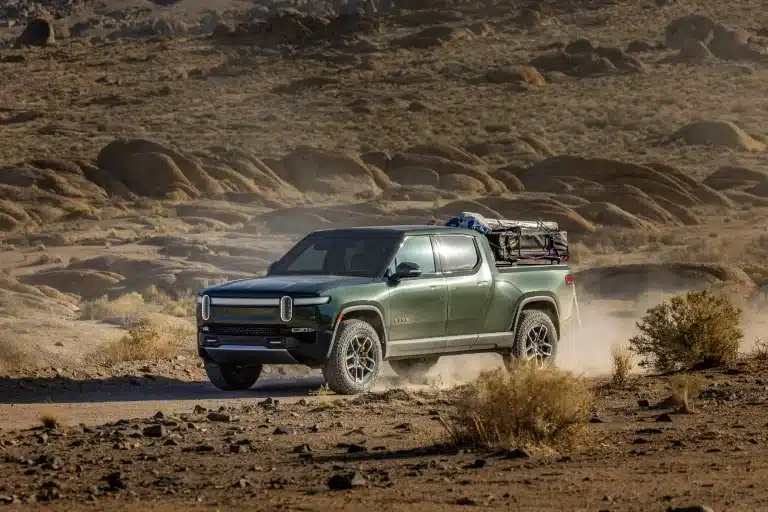Rivian’s AI Power Move: Why Wall Street Is Suddenly Bullish on This EV Underdog

Hey, it’s Chad here—and if you thought the EV wars were just about batteries and range, buckle up. Rivian just fired a shot that has Wall Street buzzing, and it’s not about a new truck or a flashier SUV. The real story? Artificial intelligence. Let’s break down why Rivian’s latest AI play has investors scrambling to get in on the action, and what it means for the future of electric vehicles.

Photo by Leo_Visions on Unsplash
Rivian’s Rocky Road—and the Surprising Turnaround
Let’s not sugarcoat it: Rivian’s journey since its blockbuster IPO in November 2021 has been a rollercoaster. After their record-setting debut, Rivian’s stock took a beating, battered by fierce competition, economic headwinds, and the shadow of Tesla looming large over the EV landscape. For a while, Rivian looked more like a cautionary tale than a Tesla rival (2).
But here’s the twist—over the past two quarters, Rivian’s stock has quietly matched Tesla’s own 10% rise. That’s no small feat, especially when you consider Tesla’s recent struggles with sales and the growing skepticism around its self-driving tech. Investors were looking for a sign that Rivian could break out of Tesla’s shadow. They just got one (2).
The AI Bombshell: Enter Aidan Gomez
So what’s got Rivian’s stock surging? In a move that caught even seasoned analysts off guard, Rivian just appointed Aidan Gomez—the founder and CEO of AI powerhouse Cohere—to its board of directors. If you’re not familiar with Gomez, let’s just say he’s a heavyweight in the AI world. Before Cohere, he was a key architect at Google Brain, the deep learning team that helped shape Google’s AI dominance (2).
This isn’t just a ceremonial board seat. Gomez brings serious AI firepower, and his mandate is clear: help Rivian supercharge its efforts in autonomy, manufacturing, and the integration of large language models (LLMs). In his own words, Gomez says he’s “eager to support the company in realizing” its vision to become a global leader in automotive and manufacturing AI.
Why AI Matters for Rivian (and the Entire EV Industry)
If you’ve been paying attention, you know that AI is the new arms race in the automotive world. Tesla’s been shouting about self-driving for years, but with mixed results—think more headlines about crashes than about flawless autonomy. The rest of the EV pack is scrambling to catch up, but most are still playing checkers while the AI giants are playing chess.
Rivian’s move signals a shift. They’re not just building more trucks—they’re betting big on smarter, safer, and more efficient vehicles. Here’s what that could mean:
- Autonomy: Rivian’s CEO RJ Scaringe has already teased full self-driving ambitions for the R1T and R1S. With Gomez on board, expect a serious push to make those dreams a reality, leveraging the latest in AI and data collection.
- Manufacturing: AI isn’t just about the cars—it’s about how you build them. Smarter factories mean faster production, fewer defects, and lower costs. If Rivian can crack this code, it could leapfrog competitors still stuck in old-school assembly lines.
- AI-Driven Features: Large language models and advanced AI could power everything from in-car assistants to predictive maintenance, giving Rivian owners a next-level experience that goes beyond horsepower and range.
The Market Context: Tesla’s Stumble, Rivian’s Opportunity
Let’s talk numbers. While Tesla’s been grabbing headlines for all the wrong reasons (Cybertruck sales, anyone?), the broader EV market is quietly thriving. According to Kelley Blue Book, U.S. EV sales jumped 10% between January and March 2025—even as Tesla’s own numbers slipped.
That’s a golden window for Rivian. Tesla’s Cybertruck is struggling to find buyers, leaving the door open for Rivian’s more traditional-looking electric pickups to win over truck lovers who aren’t ready to drive something that looks like a rejected prop from Blade Runner.
Why Wall Street Is Suddenly Paying Attention
For investors, Rivian’s AI pivot is more than just a headline—it’s a signal that the company is playing to win in the next phase of the EV race. By bringing in an AI visionary like Gomez, Rivian is telling the market: “We’re not just building cars. We’re building the future of mobility.” That’s the kind of story Wall Street loves, especially when the AI sector itself is red-hot.
And let’s be real—investors want exposure to fast-growing markets. With AI and EVs both on fire, Rivian is positioning itself at the intersection of two of the most explosive tech trends of the decade2.
What’s Next?
The real test will be execution. Can Rivian translate AI hype into real-world results—safer vehicles, smarter factories, and a better ownership experience? If they can, they might just pull off the ultimate comeback and become the EV disruptor everyone once expected.
But for now, one thing’s clear: Rivian’s not just playing catch-up anymore. With AI in the driver’s seat, they’re ready to chart their own course—and Wall Street is finally taking notice.
Love how everyone’s suddenly an AI company when the stock dips. Next up: Rivian launches its own chatbot to help you find a charging station.